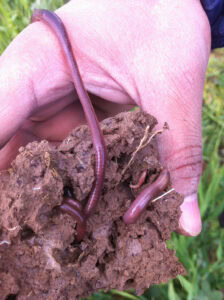Returning nitrogen to soils without chemicals

Australian researchers are investigating the production of a sustainable organic nitrogen fertiliser made from aquatic cyanobacterial biomass. This fertiliser would be ideally suited for badly degraded areas reliant on chemical fertilisers.
According to Flinders University researcher Associate Professor Kirsten Heimann many soils are degraded and becoming less fertile. “This challenges agriculture to produce sufficient high-quality food to feed the continuously growing population”, she says. “Which is further exacerbated by climatic instability threatening crop production.”
New biofertiliser

Scientists in Australia, US and Europe are testing a new biofertiliser made from the fast-growing freshwater cyanobacterium Tolypothrix, which can fix nitrogen from the atmosphere without the need for additional nitrogen fertilisation. This makes the biomass inexpensive to produce compared to alternative microalgal and macroalgal biofertilisers.
In a recent paper in Chemosphere, Dr Heimann and colleagues in Australia, the US and Spain investigate Tolypothrix production as a sustainable solution for biological soil improvement, which when combined with biogas or a spirulina-like nutritional powder promises ‘strong economic returns for regional and remote farming communities.
“Australian soils, in particular in the marginal wheat belt in Western Australia, are structurally degraded, which cannot be overcome by applications of synthetic fertilisers”, says Dr Heimann of the Flinders University Centre for Marine Bioproducts Development in South Australia. “To improve soil structure, organic carbon applications are required to return the soils’ capacity to sustain a healthy soil microbiome and to improve the soils’ cation exchange of nutrients and water-holding capacity.”
Reduce carbon emissions
Researchers say conversion of pond-produced cyanobacterial biomass produced on farming land would provide a major in-situ source of renewable nitrogen-rich fertiliser, also helping to reduce carbon emissions from chemical fertiliser production and transport.
The non-toxic blue-green algae can be cultivated in freshwater, and even slightly saline or industrial wastewater such as from coal-fired power stations, the research team has found. Capturing biofuel may also be used to offset production costs.
Biogas
Energy inputs for the production of Tolypothrix biomass can be offset by producing biogas, essentially a methane-rich gas for either drying the biomass to extract high-value health supplement phycocyanin or to produce carbon and nitrogen-rich liquid and solid biofertilisers to remediate soil infertility.



